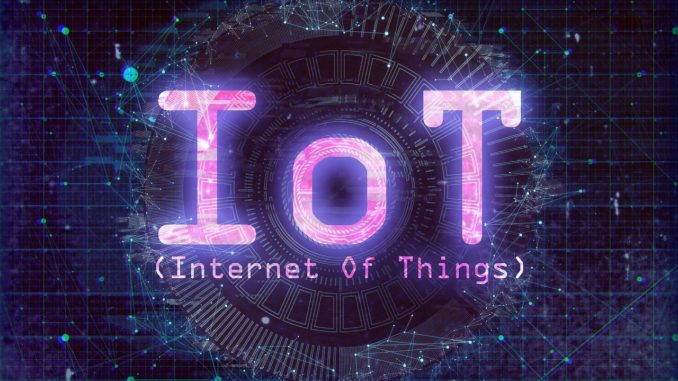
The IT sector is, undeniably, shifting – what does the year ahead hold for technology?
When we talk about ‘the future’ in relation to technology we are often, unknowingly, referring to things that already exist. Perhaps unsurprisingly, the belief of the IT experts is that 2019 will be shaped by simplification, automation, increased and improved security and the continued rise of the internet of things (IoT). The aim this year will be to increasingly implement technologies that allow IT departments additional freedoms through efficiency – hopefully, helping to lessen the impact of the gaping skills’ gap while, at the same time, improving security. In addition, this year should lay the groundwork for some of the larger technological trends that many of us have heard of by now – such as 5G and blockchain.
These are the ‘beliefs’ but, to some extent we, mere mortals, are all a bit in the dark about the future of tech – so what are the 2019 technology predictions of an organisation which ought to know what’s what – Konica Minolta?
Edge-computing and the multi-cloud
With the continued rise of the IoT, edge-computing is becoming ever-more crucial. It provides the necessary computing power for devices such as intelligent cameras, where sensitive data is processed close to the IoT solution and stays on-premises. IT infrastructure decisions in 2019 will be shaped by one key question: ‘What data should be stored and where should it be processed?’
Where fast access, without dependence on external connectivity, is needed, edge solutions will be the path forward. However, this diversification towards the multi-cloud will need to be virtually invisible to the user – wherever data is stored, and from wherever it is accessed, the experience must be seamless, immediate and secure.
Skilled labour shortages will start to reshape work in IT
As the battle over IT professionals intensifies across Europe SMEs, in particular, will feel the impact of the competition from big players in the IT industry and beyond. Tens of thousands of IT jobs are currently open in the UK and, overall, the shortage of skilled labour could leave around one million vacancies unfilled in Europe by 2020.The continuing shortage in IT is worsened by years of stagnation in the number of IT graduates coupled with growing demand for professionals in this field, so job profiles in IT will need to change significantly to ensure that work is attractive to these employees. Additionally, experts predict that the repetitive tasks of the traditional IT administrator will be automated or, where this is not possible, outsourced.
Data security will be centralised in the age of connected devices
With increasingly complex and powerful malware targeting businesses, malware is a growing concern for companies of all sizes. Potential vulnerabilities are increasing as intelligent IoT devices find their way onto the shop floors of production companies, as well as into offices.
The increase in possible threats from attackers has led to a plethora of defensive measures from companies; these are themselves the source of a number of problems because different solutions from a range of vendors working independently can lead to potential conflicts, rather than all-encompassing, separate solutions.
In the best cases, this approach is simply not efficient; in the worst cases, it is a threat to security. As a result, IT security in 2019 is expected to see a rise in centralised solutions, synchronising security across all layers.
BYOx – bring your own… infrastructure and applications
Fundamentally called into question in the wake of the introduction of GDPR, BYOD and bring your own apps (BYOA) will, again, find themselves on the agenda of many CIOs for 2019. This has to do with the benefits of ‘bring your own everything’ – BYOx.
BYOD makes it possible for employees to work with devices which they are already familiar – and, hence, most productive with – while BYOA allows employees to use their favourite third-party applications in the workplace. Unified and standardised systems are key for taking this development from tech-savvy firms and experimental phases in individual companies to a broad application in the upcoming years.
5G and its promise of business IT reliability
20gbps downlink and 10gbps uplink speeds for each mobile base station are fast enough to truly revolutionise device connectivity, enabling huge amounts of data to be transferred, very fast. This makes it not only a door-opener for user-focused technologies, but also a big leap forward for business IT solutions as well. 5G will take shape and develop over the next few years – and this will be indispensable because providers will have to fully-implement this technology before it can become truly important for businesses.
Blockchain
With its omnipresence in the industry debate, no trend outlook for IT in 2019 can afford to disregard blockchain technology. By allowing digital information to be distributed, but not copied, blockchain technology is creating the basis for an overwhelming array of possible applications across all industries – from authenticating every step in the food production chain to accurate public healthcare records.
However, as blockchain technology deployment is complex, the path to its mass implementation must be led through simplified, plug-and-play applications. This is the biggest hurdle in turning the hype unleashed by Bitcoin into a real, self-sustaining technology movement.
This article featured in the March issue of Education Executive. Subscribe now to keep up-to-date with the latest in school business management and leadership.
Don’t forget to follow us on Twitter, like us on Facebook, or connect with us on LinkedIn!

Be the first to comment